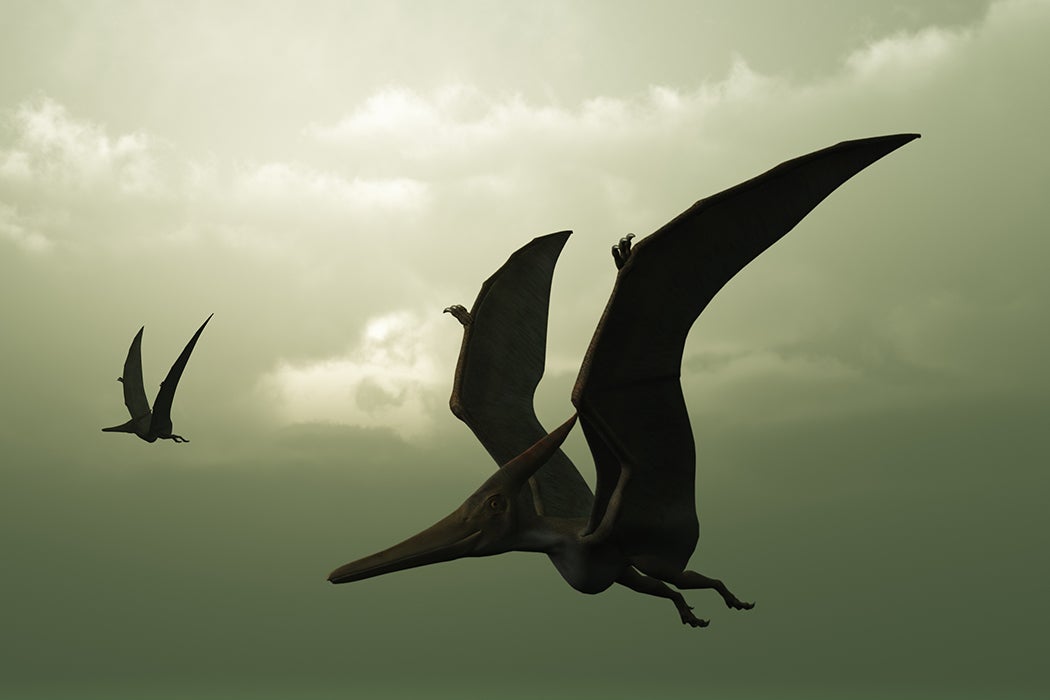Everyone loves dinosaurs. Perhaps less well-known are their cousins, the pterosaurs. Pterosaurs could fly, and were closely related to dinosaurs although not themselves dinosaurs. But their second-fiddle status may be ending. Pterosaurs just got a boost from a spectacular find in China: a huge cache of eggs, some with well-preserved embryos still inside. The amazing find is granting new insight into heretofore-unknown facets of pterosaur life. All the eggs together suggest that some pterosaurs may have nested in large groups of colonies, as many modern aquatic birds do. Anatomical details of the embryos imply that baby pterosaurs probably developed flight ability a little later. Infants may have scampered around on the ground (cute!). Despite their under-appreciated status, pterosaurs were a diverse and remarkable group of animals.
In the early 1970s, paleontologists exploring Big Bend National Park found parts of wings, necks, mandibles, and hind legs of a previously unknown pterosaur from the Cretaceous Period. What was remarkable was the extraordinary size of the fossils. A little bit of extrapolation led to an estimated wingspan of 11 meters. For comparison, an F-35 fighter aircraft wingspan is approximately 10.6 meters. While T-Rex prowled below, this mighty beast would have blotted out the sun.
And beast it was. The mandibles (lower jaws) were a meter long. Each vertebrate was up to 40 cm long. The neck was long, but the shape of the vertebrae suggest that while it could move its neck quite well laterally, it had limited mobility up and down. Taken together, it is one of the largest animals ever to take flight, but it was likely more of a scavenger than a predator. Its flying capabilities are the subject of debate, but its original discoverers postulated that it possibly soared on thermals like a modern vulture. Today it has been formally named Quetzalcoatlus, after the Aztec feathered serpent god.
Pterosaurs come in other flavors besides mind-bogglingly enormous. Many had crazy crests or other decorations on their heads. The Pteranodon is the most familiar shape; a long narrow jaw and a pointy crest sweeping backward from the top of the head (see the image above). Less well known are the wild-looking Tapejarids, which have large, broad crests sweeping up from the front of the skull. Some specimens look like bony shark fins protruding from the head. The crests are often hollow, probably to reduce weight for flight, and in some were likely covered with a horny material (so they might have looked even weirder than they already do). The exact function of these huge, impractical structures is not certain, but embedded blood vessels suggest that they may have helped the animal keep cool. They may also have helped species recognize mates or resulted from sexual selection, a Cretaceous equivalent to a peacock tail.







